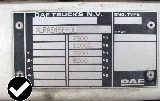What Is Vehicle Identification Number (VIN) and What Is It Used for?
 The acronym VIN means the vehicle identification number, an exclusive 17-digit alpha and numeric string of symbols for every vehicle. VIN number usage has been directed by the American Transportation Department, thus, since 1980s every car has to be stamped.
The acronym VIN means the vehicle identification number, an exclusive 17-digit alpha and numeric string of symbols for every vehicle. VIN number usage has been directed by the American Transportation Department, thus, since 1980s every car has to be stamped.
 A VIN number is commonly used to track vehicle recalls, warranty claims, registrations, insurance coverage and thefts. Every symbol in the VIN is has its specific aim.
A VIN number is commonly used to track vehicle recalls, warranty claims, registrations, insurance coverage and thefts. Every symbol in the VIN is has its specific aim.
Decoding the VIN by its symbols
1st symbol - identifies the country where the vehicle was manufactured. For instance, 1 or 4 stand for the U.S., 2 for Canada, 3 - Mexico, J - Japan, K - Korea, S - England, W - Germany, Z - Italy.2nd - reveals the manufacturer. For instance, letter A means Audi, B - BMW, G - General Motors, F - Ford, H - Honda, D - Mercedes-Benz, N - Nissan, T - Toyota, V - Volkswagen.
3rd - identifies the type of the vehicle or manufacturing division.
4th-8th - identifies the attributes of the vehicle, including engine type and body style.
9th - is known as the "check digit". This character exclusively identifies the vehicle, making sure that no other car during a 30-year period bears the identical VIN.
10th - identifies the year of the model.
11th - reveals the assembly plant.
From 12th up to 17th - shows the succession of the vehicle from the assembly line. The last four symbols are always numeric.
Where Can One Get the VIN stamp?
Auto producers stamp the VIN in different areas on a vehicle. Among the most visible are the front windshield, placed on the driver part interior dash on the windshield, as well as on the driver's part door jamb. A VIN can be stamped on the top or front of the engine piece, engine frame and a variety of other hidden sectors of the vehicle.Customers can also choose to get their VIN etched into diverse parts of the vehicle, the experience, encouraged by insurance companies that help to discourage selling of the car details and theft.